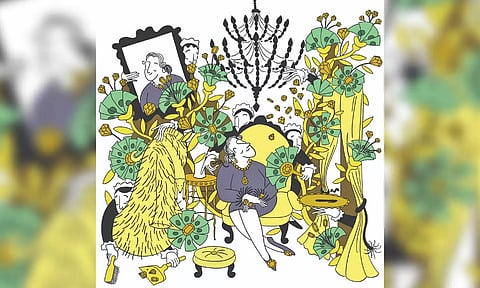

By Molly Young
NEW YORK: Class consciousness takes a vacation while we’re in the thrall of this book,” Barbara Grizzuti Harrison wrote in the Book Review in 1985, in her evaluation of the heiress Gloria Vanderbilt’s memoir “Once Upon a Time.”
To be clear, Harrison was referring to the class consciousness of the reader, not the author.
Vanderbilt demonstrates perfect awareness throughout her book that most young children don’t play with emerald tiaras and alligator jewel boxes lined in chestnut satin, or rely on the services of multiple butlers, or lose count of their own houses.
Harrison’s point was that Vanderbilt’s talent with a pen — and perspective on her own economic altitude — allowed consumers of her tale to suspend their envy and engage with the reality of growing up in opulent neglect.
Memoirs by the rich have always been major publishing events. Readers love to prowl wide-eyed through gilded corridors, and I am no exception.
A cherished portion of my shelf is devoted to the self-accounts of Rothschilds, Vanderbilts, Rockefellers, Pells, Guggenheims, and other names familiar from banks, art museums, and city centers.
It wasn’t until trying to get through this year’s big contributions to the genre — Prince Harry’s “Spare” and Paris Hilton’s “Paris: The Memoir” — that I noticed two curious facts about my collection. One, the shelf contained nothing published after 2020. Two, and more crucially, it featured no authors born after 1937, which suggests that 1937 was the last year rich people were manufactured to my precise specifications.
What a loss! I tried “Spare” first, inveigled by both the great title and the knowledge that it was written with J.R. Moehringer, who assisted Andre Agassi with his own memoir, “Open.” The Agassi book not only mapped the tennis star’s psychology but was festooned with the sort of detail we crave in a memoir — such as the fact that Agassi toured with a pet parrot named Peaches whom Agassi considered an “integral part” of his team. Or that he courted Brooke Shields (successfully) via fax machine. Or that he received two tickets within the same hour for driving his Corvette at “supersonic” speed in Arizona and was then hauled before a judge who sentenced Agassi to, and this is a quote, “go give ’em hell” at his next tournament.
By the time “Open” was published, in 2009, Agassi had retired from professional tennis and could afford to be candid in print. Equally important, he had the entertainment instincts (or audacity) to do so.
There is a lesson here. Intriguing memoirs tend to be written by people who have nothing to lose, or who have managed to delude themselves into thinking they have nothing to lose. “Spare” and “Paris: The Memoir,” on the other hand, read like exercises in brand management by people positioning themselves for future conquests.
The prince and Paris aren’t boring; they’re just utterly devoid of Agassi-level imperviousness.
That imperviousness can come from age, money, eccentricity, or all three — which brings us back to my shelf of Rich People Memoirs, and what the authors have in common.
The gold standard of the category is Guy de Rothschild’s “The Whims of Fortune,” published as “Contre Bonne Fortune” in French in 1983 and translated into English two years later.